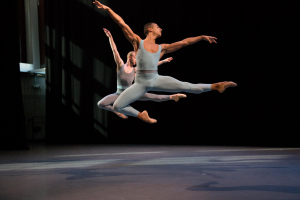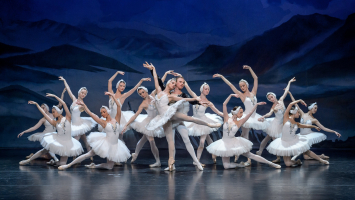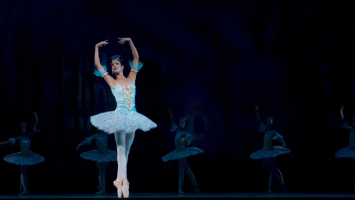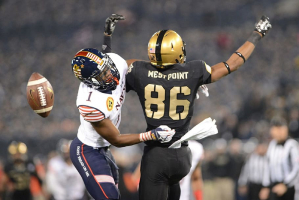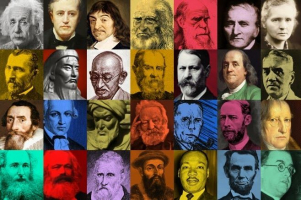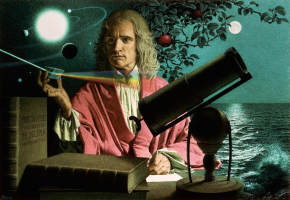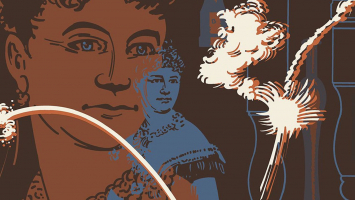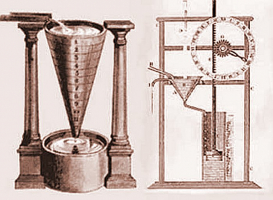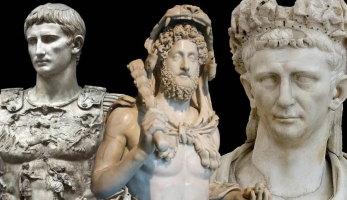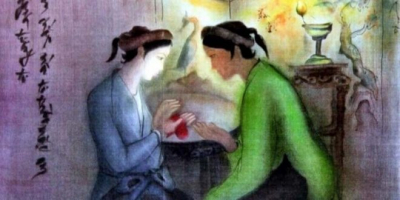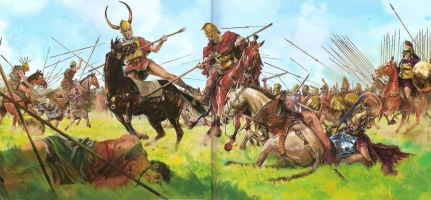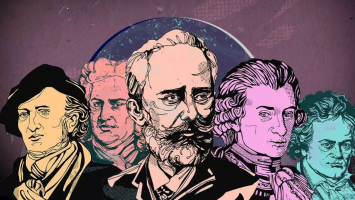Top 10 Greatest American Dancers
Toplist considers the following individuals to be the top ten most legendary American dancers of all time. This list of famous American dancers is organized by ... read more...HPI (Historical Popularity Index), a metric that collects data on a biography's online popularity.
-
Topping the list of the best American dancers is Isadora Duncan (1877-1927), known as the "Mother of Modern Dance," was born in San Francisco and went on to liberate dance from the restrictions of the ballet of her time, eschewing the usage of slippers and corsets in favor of using simple, natural movement combined with lively musicality. She searched for a movement language that would expose the human spirit and its link to nature, and she was the first to choreograph to music that was not designed for dance, such as Beethoven, Chopin, Brahms, and Scriabin's works. Duncan's career was marred by controversy, since her bare limbs and daring movement offended American spectators.
She was driven to achieve and traveled to Europe and Russia with her unlimited spirit, where she met and inspired some of history's greatest artists. Isadora and her family moved to London in May 1899, looking for opportunities to learn more about art history and its connections to dance. Isadora Duncan studied Greek and Roman antiquities at the British Museum, spending hours in front of the works of art, wondering how they would move. She met and performed for famous Londoners here, dancing the Orpheus mythology to Gluck's music. Isadora Duncan identified herself in The Art of the Dance as the "spirit of the music," not the storyteller or the character of the mythology she danced. She danced as a soloist but always imagined herself to be the Greek Chorus reflecting the voices of nature and humanity.
Isadora accompanied her brother Raymond to Paris the following year, when he sketched and she examined the Louvre's Greece vase collection. Isadora was invited to perform her own program in Budapest, Hungary (1902), after a tour with Loie Fuller's company. She danced to sold-out audiences with a full orchestra. The Blue Danube was her well-known encore. Following that, performances were held in Berlin, Vienna, and Munich. Emile-Antoine Bourdelle, Peter Berger, Robert Henri, August Rodin, Jose Clara (see image above), Jules Grandjouan, Valentine Lecomte, and Abraham Walkowitz were among the many visual artists who captured her exuberant movement.
- Born: May 26, 1877[a]San Francisco, California, U.S.
- Died: September 14, 1927 (aged 50)[a]Nice, France
- Nationality: American, French, Soviet
- Known for: Dance and choreography
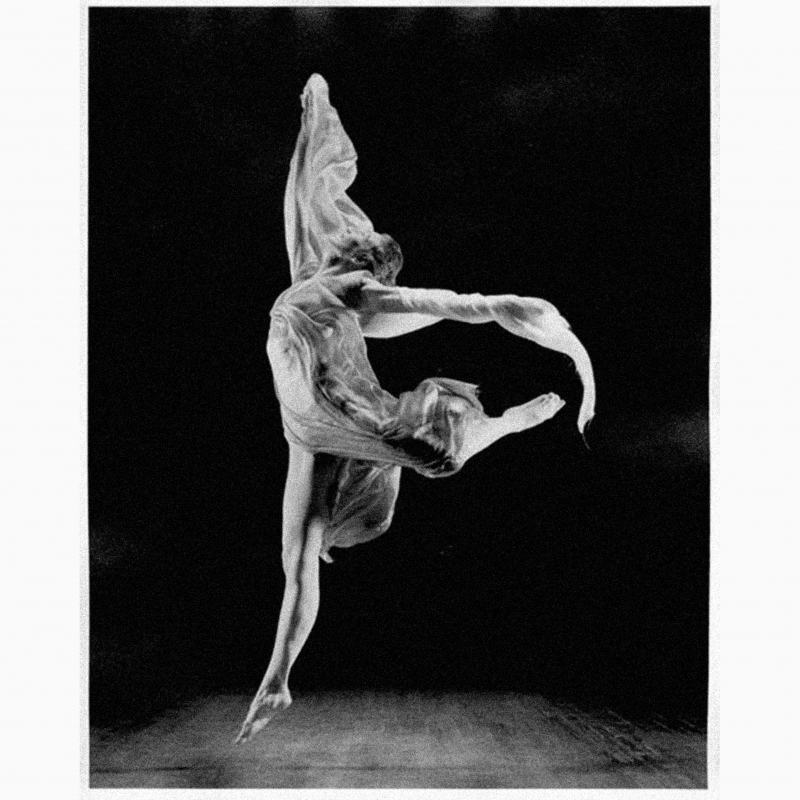
thoughtco.com 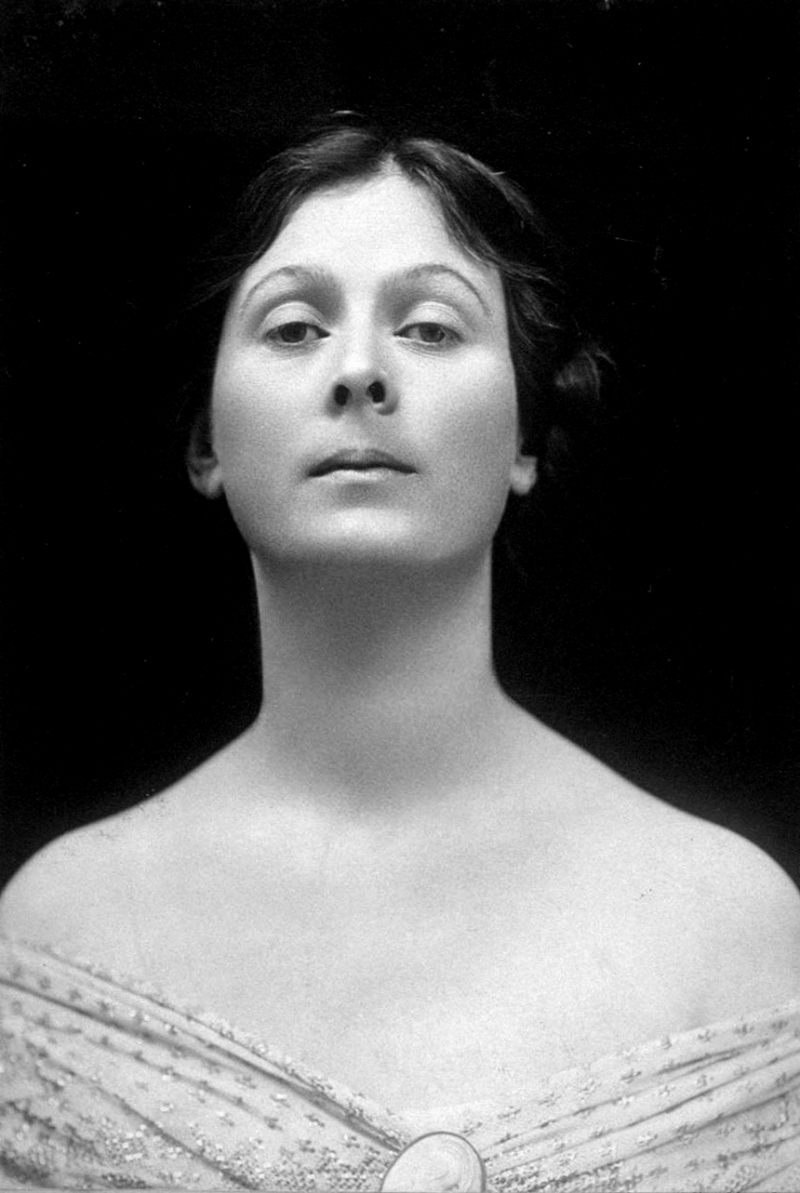
thoughtco.com -
The 2nd place in the list of the best American dancers is Josephine Baker (born Freda Josephine McDonald; naturalized French Joséphine Baker; 3 June 1906 – 12 April 1975). She was a French dancer, singer, and actress who was born in the United States. Her career was mostly focused in Europe, particularly in her adopted country of France. She was the first Black woman to star in a major motion picture, Mario Nalpas and Henri Étiévant's silent film Siren of the Tropics, released in 1927. Baker was one of the most famous performers to headline the Folies Bergère revues in Paris during her early career. In 1927, her participation in the revue Un vent de folie created a stir in the city.
Her outfit, which consisted just of an artificial banana short skirt and a beaded necklace, became an iconic image and symbol of both the Jazz Age and the Roaring Twenties. Baker was referred to as the "Black Venus," the "Black Pearl," the "Bronze Venus," and the "Creole Goddess" by artists and thinkers of the time. She was born in St. Louis, Missouri, but after marrying French industrialist Jean Lion in 1937, she renounced her American citizenship and became a French citizen. In France, she reared her children. During World War II, she aided the French Resistance.
After the war, she received the Resistance Medal from the French Committee for National Liberation, the Croix de Guerre from the French military, and General Charles de Gaulle appointed her a Chevalier of the Légion d'honneur. "I have two loves, my nation and Paris," Baker sang. Baker is known for her efforts to the civil rights movement in the United States, when she refused to perform for segregated audiences.
Following Martin Luther King Jr.'s assassination, Coretta Scott King volunteered her unofficial leadership in the civil rights movement in the United States in 1968. Baker declined the offer after giving it some thought because she was concerned about her children's safety. She was buried in the Panthéon in Paris on November 30, 2021, making her the first black woman to receive one of France's highest honors. Because she is buried at Monaco Cemetery, a cenotaph was erected in vault 13 of the Panthéon's crypt.
- Born: 3 June 1906St. Louis, Missouri, U.S.
- Died: 12 April 1975 (aged 68)Paris, France
- Known for: Vedette, singer, dancer, actress, civil rights activist, French Resistance agent
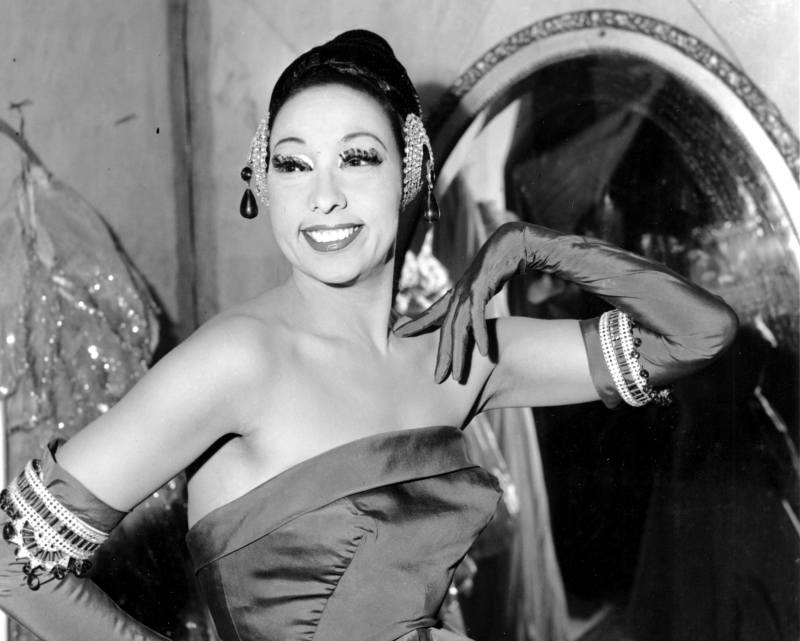
npr.org 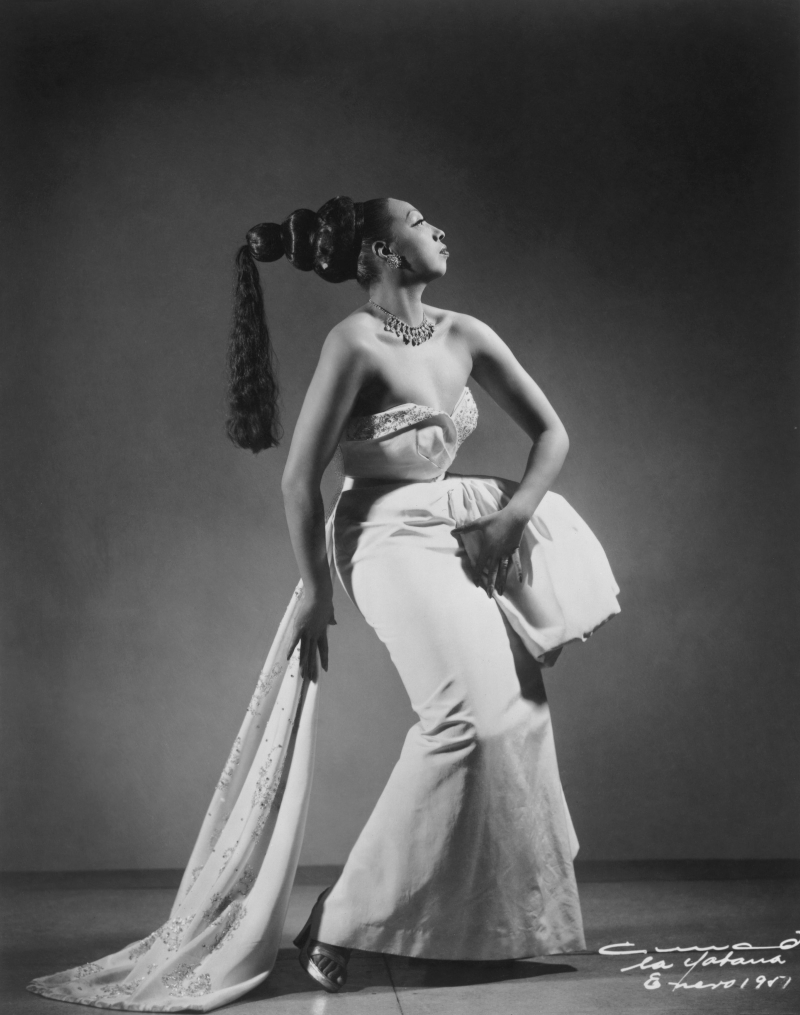
veranda.com -
The 3rd place in the list of the best American dancers is Martha Graham. She was an American choreographer and modern dancer who lived from May 11, 1894 until April 1, 1991. Graham's method transformed American dance and is currently taught around the world. Graham was a dancer and teacher for more than seventy years. She was the first dancer to perform in the White House, travel abroad as a cultural ambassador, and receive the Presidential Medal of Freedom with Distinction, the highest civilian honour in the United States.
She was awarded numerous accolades during her lifetime, including the Key to the City of Paris and Japan's Imperial Order of the Precious Crown. "I have spent my entire life with dancing and being a dancer," she remarked in the 1994 documentary The Dancer Revealed. It's allowing life to use you in a powerful way. It isn't always pleasant. It can be frightening at times. Nonetheless, it is unavoidable." The Martha Graham School of Dance is the oldest dance school in the United States, having been founded in 1926 (the same year as Graham's professional dance company). Originally housed in a modest studio within Carnegie Hall, the school now has two locations in New York City.
- Born: May 11, 1894
- Died: April 1, 1991 (aged 96)New York City, U.S.
- Known for: Dance and choreography
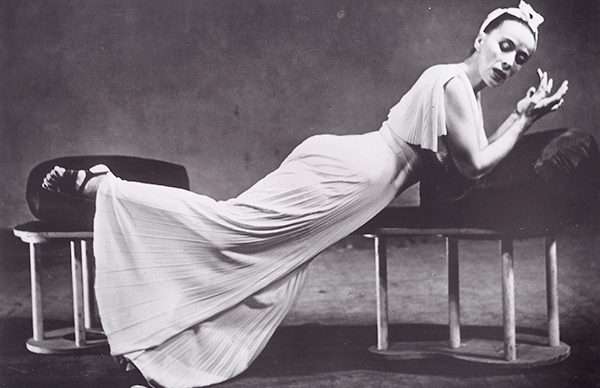
marthagraham.org 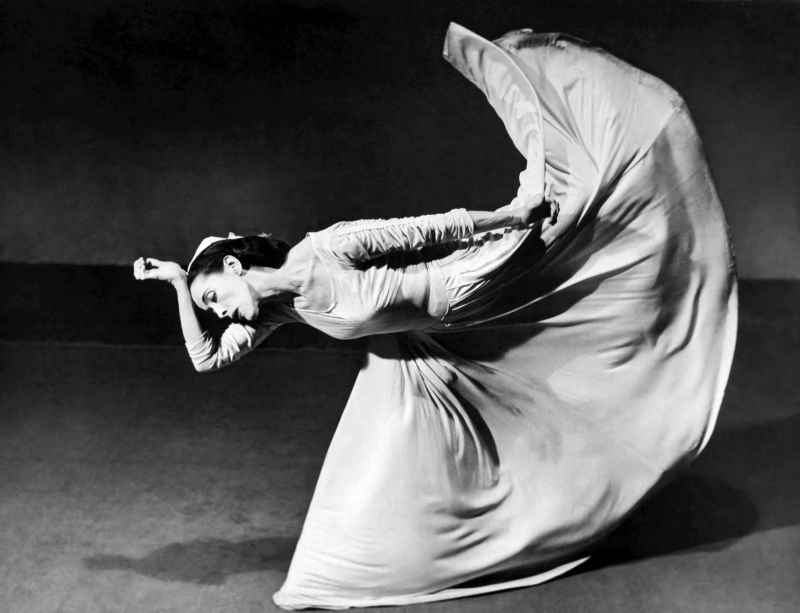
britannica.com -
Ranked 4th in the list of the best American dancers is Mercier Philip "Merce" Cunningham (April 16, 1919 – July 26, 2009). He was an American choreographer and performer who spent more than 50 years at the forefront of American modern dance. He worked with composers John Cage, David Tudor, and Brian Eno, as well as graphic artists Robert Rauschenberg, Bruce Nauman, Andy Warhol, Roy Lichtenstein, Frank Stella, and Jasper Johns, as well as fashion designer Rei Kawakubo. His collaborations with these artists had a significant impact on avant-garde art outside of the dance scene. Cunningham had a huge impact on modern dance as a choreographer, teacher, and founder of the Merce Cunningham Dance Company.
Many of the dancers who studied with Merce Cunningham went on to start their own groups. Paul Taylor, Remy Charlip, Viola Farber, Charles Moulton, Karole Armitage, Robert Kovich, Foofwa d'Imobilité, Kimberly Bartosik, Flo Ankah, Jan Van Dyke, Jonah Bokaer, and Alice Reyes are among those who have participated. The Legacy Plan, presented by the Cunningham Dance Foundation in 2009, is a plan for the continuance of Cunningham's work as well as the celebration and preservation of his artistic legacy. Cunningham was awarded the National Medal of Arts and the MacArthur Fellowship, two of the greatest honors in the arts. He also got the Praemium Imperiale from Japan and the Laurence Olivier Award from the United Kingdom, as well as being appointed Officier of the Légion d'honneur in France.
- Born: April 16, 1919Centralia, Washington, U.S.
- Died: July 26, 2009 (aged 90)New York City, New York, U.S.
- Known for: Dancer, choreographer
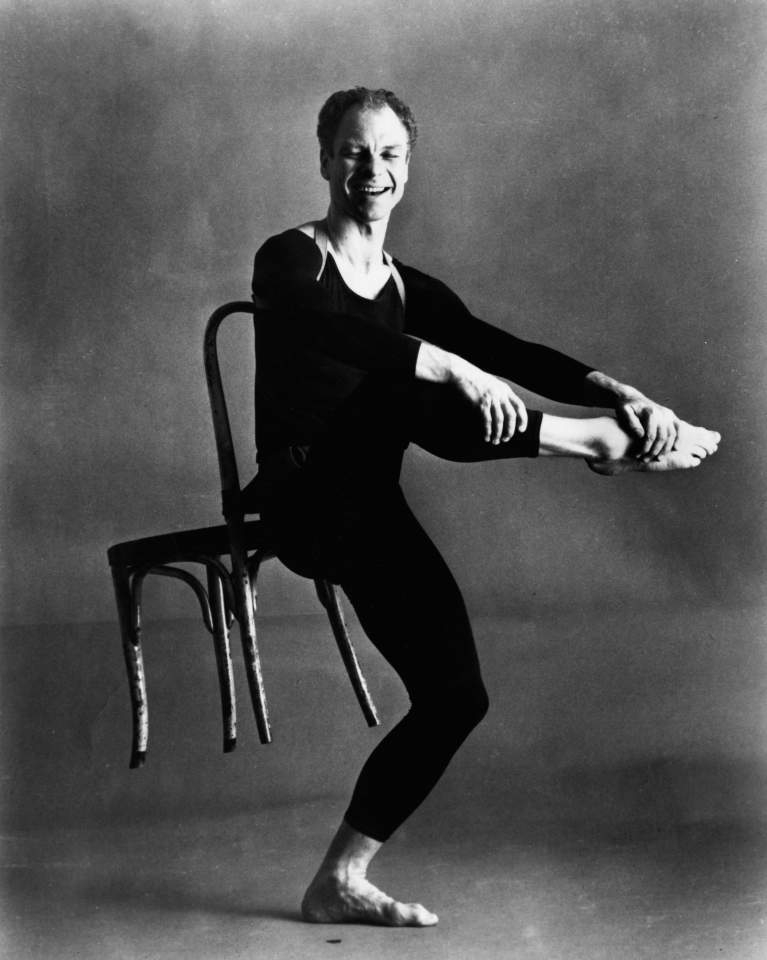
rauschenbergfoundation.org 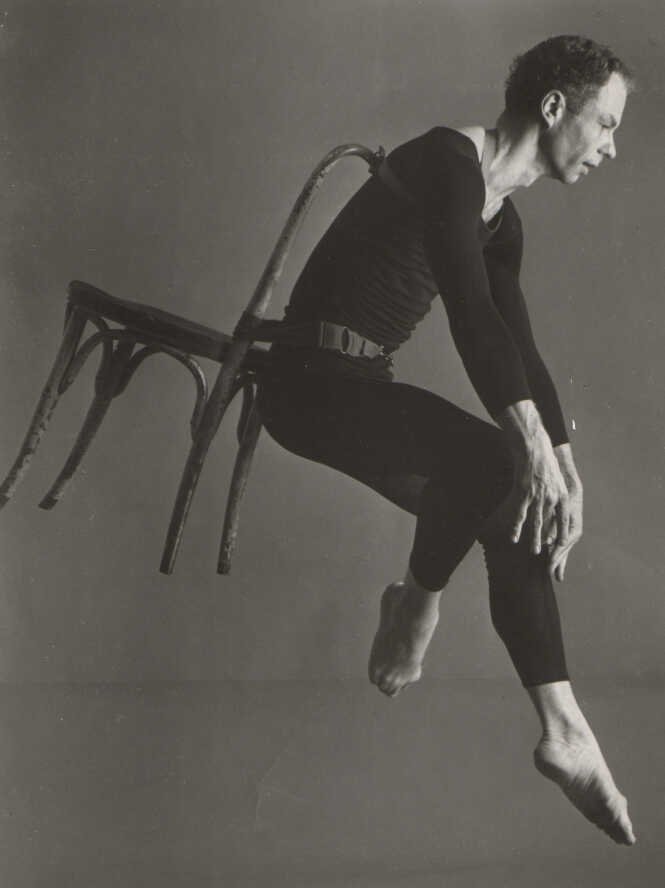
npr.org -
Ranked 5th in the list of the best American dancers is Alvin Ailey Jr. (January 5, 1931 – December 1, 1989). He was a dancer, choreographer, and activist in the United States who founded the Alvin Ailey American Dance Theater (AAADT). He founded AAADT and the Ailey School to nurture Black artists and communicate the universality of the African-American experience through dance. His art, which he created as a gay man, blended theater, modern dance, ballet, and jazz with Black vernacular, resulting in hopeful choreography that continues to raise global awareness of Black existence in America.
Revelations, Alvin Ailey's choreographic masterpiece, is one of the world's most popular and performed ballets. He combined primitive, modern, and jazz dance elements with a concern for Black rural America in this production. The United States Congress designated AAADT as a "essential American cultural ambassador to the world" on July 15, 2008. In honor of AAADT's 50th anniversary, then-Mayor Michael Bloomberg designated December 4 "Alvin Ailey Day" in New York City, and then-Gov. David Paterson honored the organization on behalf of the state.
- Born: January 5, 1931Rogers, Texas, U.S.
- Died: December 1, 1989 (aged 58)Manhattan, New York City, U.S.
- Known for: Dancer, choreographer
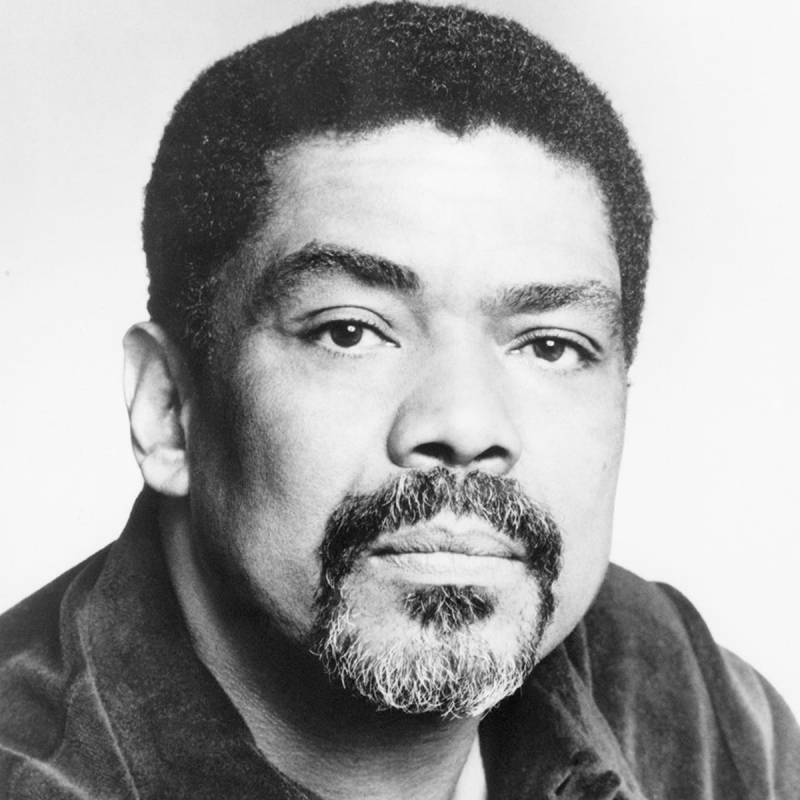
biography.com -
Ranked 6th in the list of the best American dancers is Elizabeth Marie Tallchief. He was an American ballerina (Osage family name: Ki He Kah Stah Tsa; January 24, 1925 – April 11, 2013). She was regarded as the country's first prominent prima ballerina. She is credited with revolutionizing ballet as the first Native American (Osage Nation) to hold the position. Tallchief has been involved in dancing almost since birth, beginning official classes at the age of three. Her family moved from Fairfax, Oklahoma, to Los Angeles, California, when she was eight years old. The move was made to help Maria and her younger sister, Marjorie, boost their careers. Both sisters went on to become professional dancers and significant characters in the industry.
She traveled to New York City at the age of 17 in quest of a job with a prominent ballet company, and chose the name Maria Tallchief on the advice of others. She went on to work for the Ballet Russe de Monte Carlo for the next five years, when she met choreographer George Balanchine. Tallchief was the company's first star when Balanchine co-founded what would become the New York City Ballet in 1946. The ballet was altered by the combination of Balanchine's demanding choreography and Tallchief's impassioned dance. Tallchief rose to the top of the ballet industry with her portrayal in The Firebird in 1949, establishing her as a prima ballerina. Her portrayal of the Sugarplum Fairy in The Nutcracker catapulted the ballet from obscurity to prominence in the United States.
She toured the globe and was the first American to perform at the Bolshoi Theater in Moscow. Before retiring in 1966, she made regular appearances on American television. Tallchief was involved in promoting ballet in Chicago after retiring from dance. For the most of the 1970s, she was the director of ballet at the Lyric Opera of Chicago, and in 1981, she founded the Chicago City Ballet. The people of Oklahoma honored Tallchief with a number of sculptures and a commemorative day. She was honored with a National Medal of Arts and was inducted into the National Women's Hall of Fame. Tallchief was honored with a Kennedy Center Honor in 1996 for his lifetime achievements. Several films and biographies have been made on her life.
- Born: January 24, 1925Fairfax, Oklahoma, U.S.
- Died: April 11, 2013 (aged 88)Chicago, Illinois, U.S.
- Known for: Prima ballerina
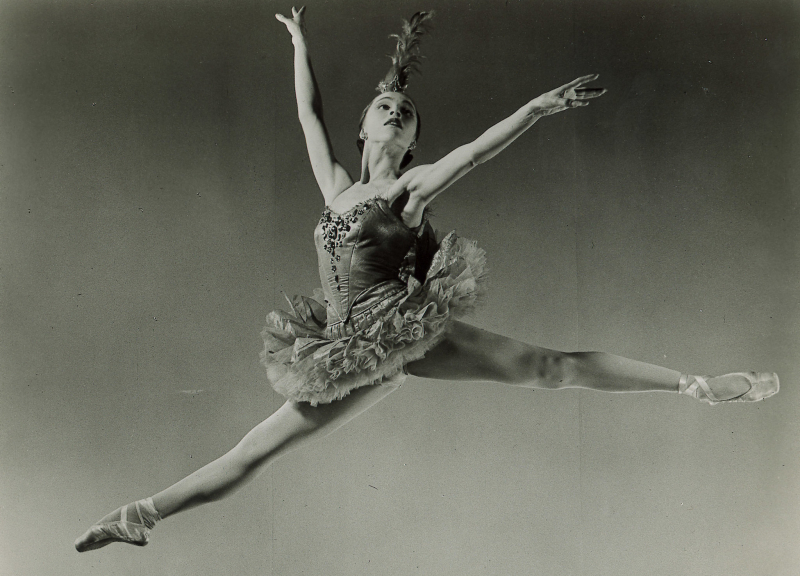
nytimes.com 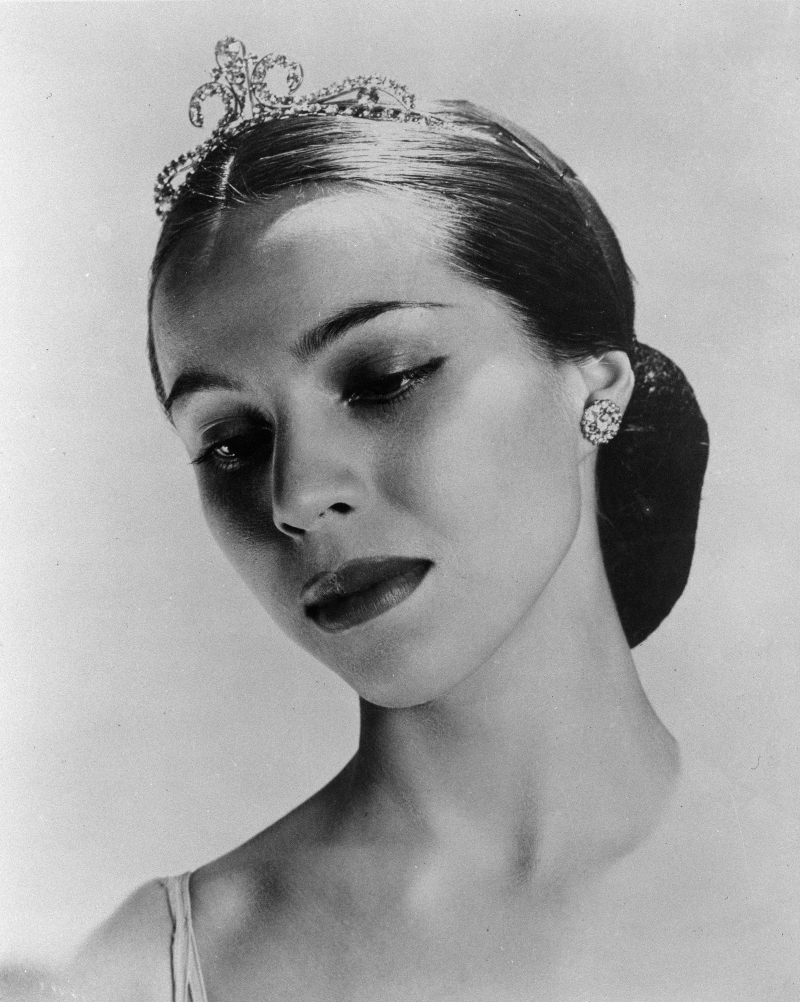
nytimes.com -
Adam Darius was an American dancer, mime artist, playwright, and choreographer who lived from May 10, 1930, to December 3, 2017. He performed in over 86 countries on six continents as a performer. He wrote 22 plays and published 19 books as a writer. The BBC World Service recognized him as "one of the most remarkable talents of the twentieth century" in a show devoted to his career. At the age of 14, Adam Darius began his ballet and modern dance instruction, and went on to study with Anatole Oboukhov, George Goncharov, Olga Preobrajenska, and José Limón, among others.
His professional career began in 1946 with performances at New York's Metropolitan Opera House, and he went on to perform with a number of ballet companies, including the International Ballet of the United Kingdom (1953), the Royal Winnipeg Ballet of Canada (1954), and the Scandinavian Ballet of Denmark (1955). (1962). He was also the choreographer for the Israel National Opera from 1963 to 1964, where he choreographed four operas for Plácido Domingo (Don Giovanni, Carmen, La Traviata, and The Pearl Fishers, all of which premiered in Tel-Aviv in 1963). Adam Darius was the director of his own company, the Israeli Ballet, from 1964 until 1966.
In 1967, Adam Darius defied convention by presenting his unique mix of dance and mime, dubbed "expressive mime," at the Spoleto Festival in Italy and the Arts Lab in London. He traveled numerous nations in the years after, including South Africa (1970), the Soviet Union (1971), the Philippines, Papua New Guinea, and Australia (1971), Syria, Iran, and Afghanistan (1976), Japan (1984), and Greenland (1985). (1998). In conjunction with Kazimir Kolesnik, Adam Darius' notion of physical theatre was realized in London productions of Yukio Mishima (1991), Rimbaud and Verlaine (1992), and Tower of Babel (1993).
- Born: 10 May 1930
- Died: 3 December 2017
- Known for: dancer, mime artist, writer and choreographer
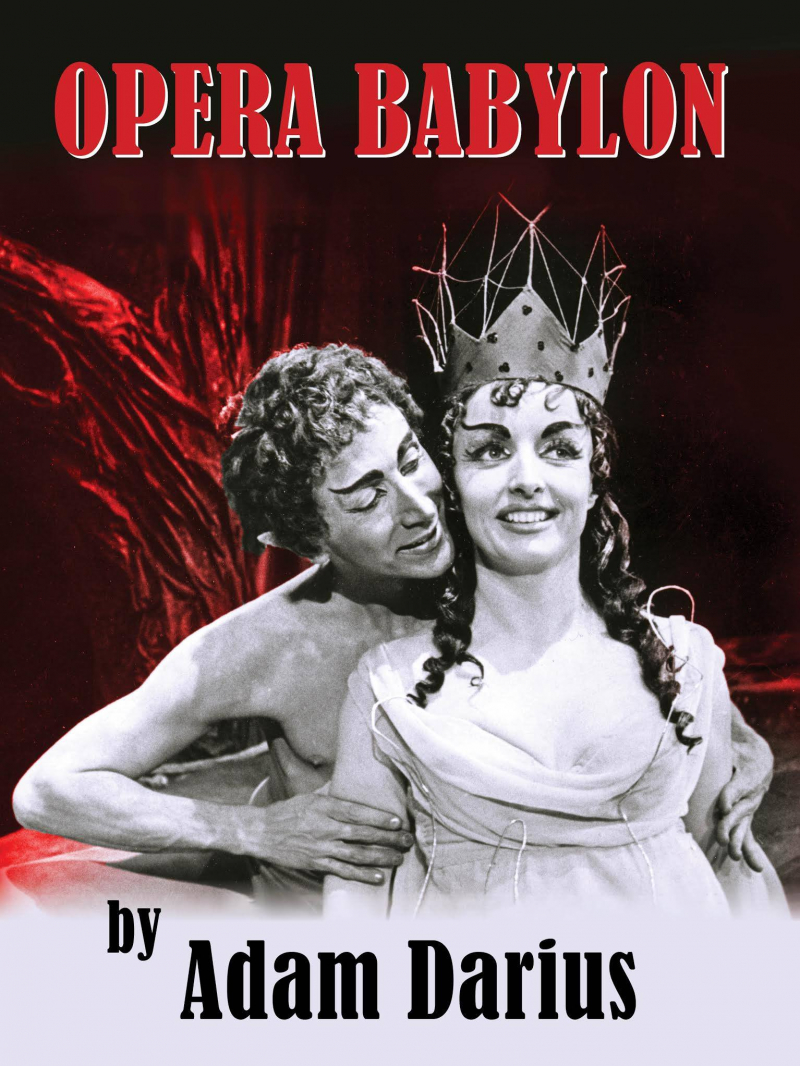
facebook.com -
Frankie Manning has always been one of the most essential factors in the development and dissemination of the Lindy hop, from social dancing in Harlem's ballrooms as a youngster to his stay with the elite Whitey's Lindy Hoppers. He is recognized with several influential and long-lasting contributions to this uniquely American art form, including the development of the Lindy air step and synchronized ensemble Lindy routine, which helped catapult the dance from the ballroom to the stage and movie. Frankie was born in 1914 in Florida and lived there until he was three years old, when his mother brought him to Harlem, the birthplace of the Lindy Hop. Frankie discovered he was part of a group of dedicated dancers who would inspire the dancing and music of the 1930s and 1940s as he grew up in the midst of this Swing Era landscape.
Frankie quickly took his talents on the road as a lead dancer and principal choreographer for Whitey's Lindy Hoppers, based at the Savoy Ballroom, to which he was captivated as a teenager by its great swing bands and fabulous Lindy hopping. He toured the world with jazz greats Ethel Waters, Ella Fitzgerald, Bill "Bojangles" Robinson, Duke Ellington, Billie Holiday, Count Basie, and Cab Calloway, among others, and appeared in several films, including Radio City Revels with Ann Miller (1937) and Hellzapoppin' with Olsen & Johnson and Martha Raye (1941). Frankie did a command performance for King George VI while dancing in London in 1937. Manning, dubbed "Musclehead," was featured in a Life magazine piece in 1941, highlighting his acrobatic Lindy style.
Frankie was rediscovered in 1986, thanks to the rebirth of swing dance. Frankie globetrotting once more, sharing his dance magic through seminars, lectures, and performances, this living legend arose to lead a new breed of jitterbugs whose fascination with the Lindy hop set Frankie globetrotting once more. Frankie was featured in ABC's primetime news show 20/20 in 1989. "Frankie Manning is one of our country's cultural jewels, and he went unacknowledged for far too long," producer Alice Pifer said. That's why I thought he deserved to be featured on national television."
Frankie was a dance consultant and performed in Spike Lee's film Malcolm X in 1992. He choreographed and danced in Stompin' at the Savoy, an NBC made-for-television movie directed by Debbie Allen, with fellow Lindy hopper Norma Miller. Frankie has choreographed for a variety of dance companies around the world since 1988, including Alvin Ailey American Dance Theater, American Ballroom Theater, Zoots and Spangles (England), The Jiving Lindy Hoppers (England), The Rhythm Hot Shots (Sweden), and New York's own Big Apple Lindy Hoppers, for whom he served as artistic director and chief choreographer.
- Born: May 26, 1914Jacksonville, Florida, U.S.
- Died: April 27, 2009 (aged 94)Manhattan, New York, U.S.
- Known for: Choreographer, dancer
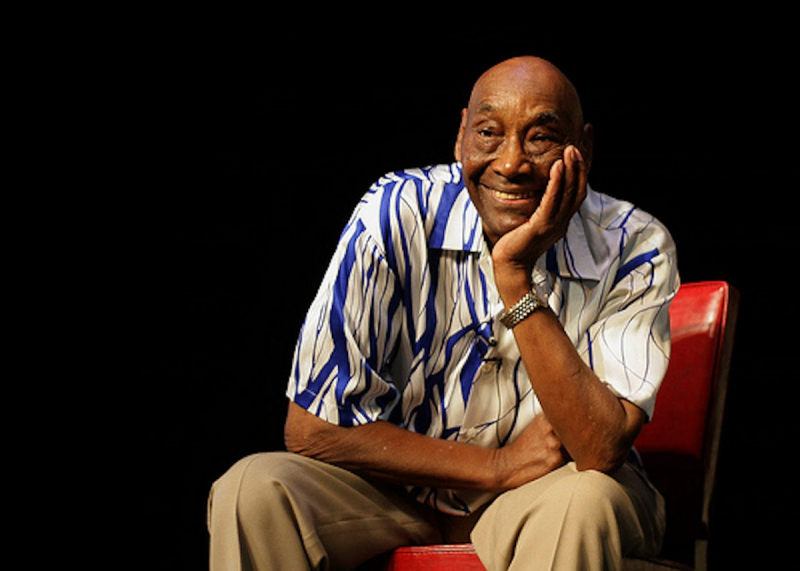
swingdanceleeds.com 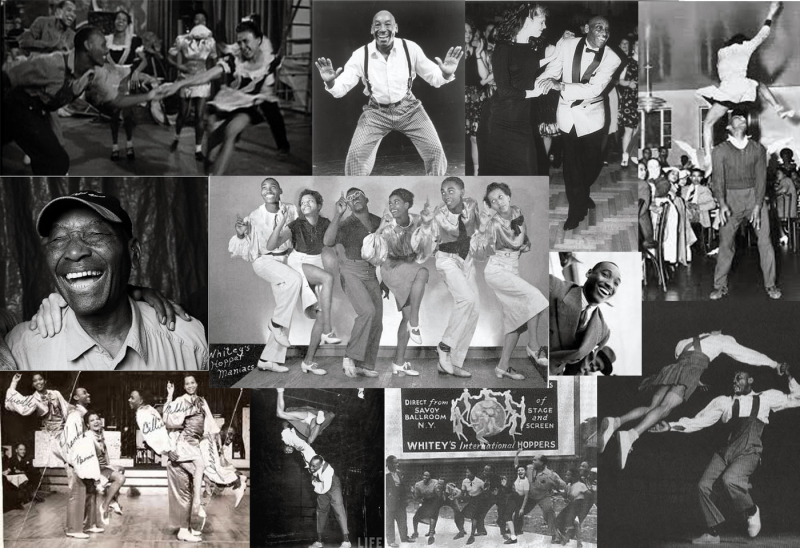
swingdanceleeds.com -
Katherine Mary Dunham (June 22, 1909 – May 21, 2006) was an American dancer, choreographer, novelist, educator, anthropologist, and social activist who developed the Dunham Technique. Dunham directed her own dance company for many years and had one of the most successful dancing careers in African-American and European theater in the twentieth century. The "matriarch and queen mother of black dance," as she's been dubbed. Dunham got an early bachelor's degree in anthropology while a student at the University of Chicago, where she also performed as a dancer and maintained a dance school. She travelled to the Caribbean to study dance and ethnography after receiving a fellowship. She later returned to graduate school and completed an anthropology master's thesis.
She did not complete the other requirements for that degree, but she knew that performance was her professional calling. Dunham's career peaked in the 1940s and 1950s, when she was well-known in Europe and Latin America, as well as in the United States. "Dancer Katherine the Great," according to the Washington Post. She ran the Katherine Dunham Dance Company for nearly 30 years, making it the sole self-supporting American black dance troupe at the time. She choreographed around ninety individual dances during her long career. Dunham was a pioneer in African-American modern dance as well as a pioneer in the study of ethnochoreology, or dance anthropology. She also created the Dunham Technique, a movement strategy that she used to accompany her dance performances.
- Born: June 22, 1909Chicago, Illinois, U.S
- Died: May 21, 2006 (aged 96)New York City, U.S
- Known for: Modern dancer, choreographer, author, educator, activist
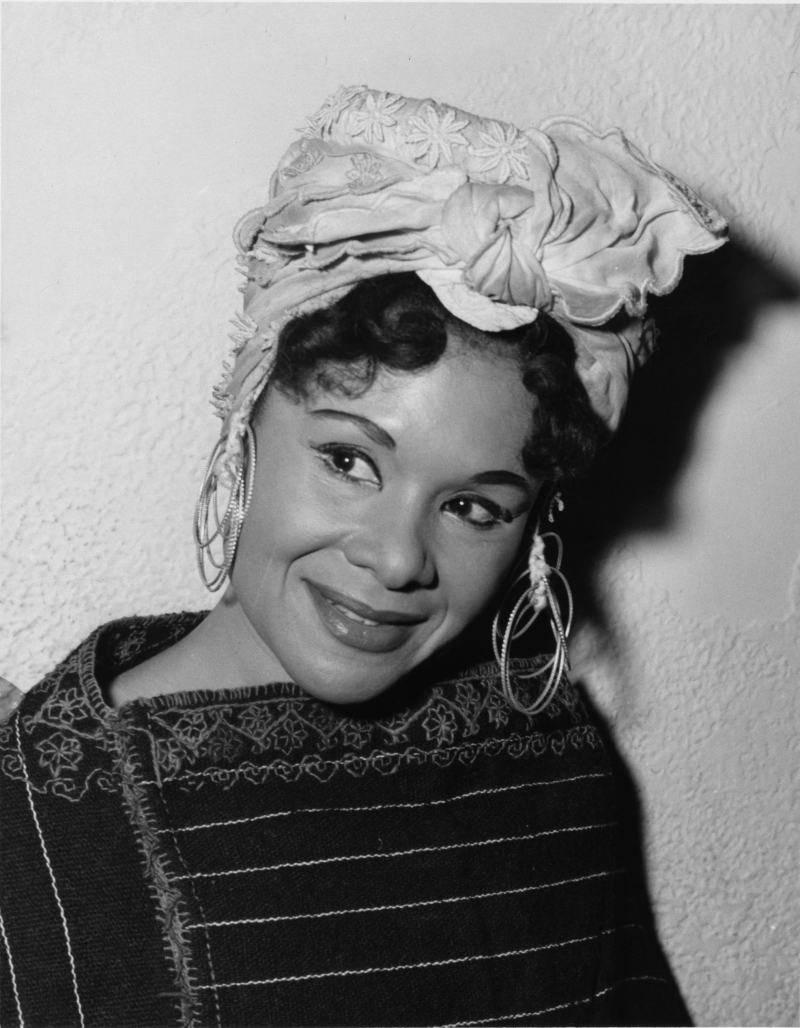
nytimes.com 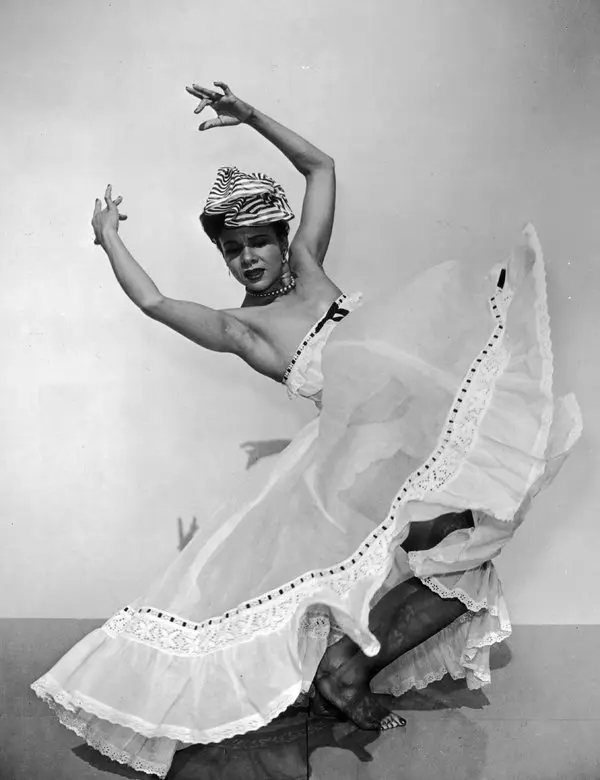
nytimes.com -
Twyla Tharp (born July 1, 1941 in Portland, Indiana, United States) was a creative and frequently witty American dancer, director, and choreographer. Tharp received extensive musical and dancing training as a kid in both her hometown of Portland, Indiana, and in Los Angeles. She trained at the American Ballet Theatre School while at Barnard College, where she was taught by Richard Thomas, Martha Graham, and Merce Cunningham, among others. She joined the Paul Taylor Dance Company in 1963, shortly before graduating from Barnard, and quickly established herself as a dancer of tremendous talent and inventiveness. She started her own group in 1965.
Tank Dive, Tharp's first public performance piece, was premiered at Hunter College in 1965. She choreographed a number of pieces over the next few years, many of which included street clothes, a barren stage, and no music. She cultivated a tiny but devoted audience with her eccentric, technically exact explorations of various types and combinations of motions. Tharp began incorporating jazz music into her dances in 1971, allowing her to reach a wider audience. Her choreography maintained its technical brilliance, which was often covered with a casual air, but its flashes of sardonic humour became increasingly noticeable. Tharp established herself as one of the most original and popular modern choreographers with works such as The Fugue (1970), Deuce Coupe (1973), Push Comes to Shove (1976), and Baker's Dozen (1979).
- Born: July 1, 1941 (age 80)
- Known for: Choreographer, dancer
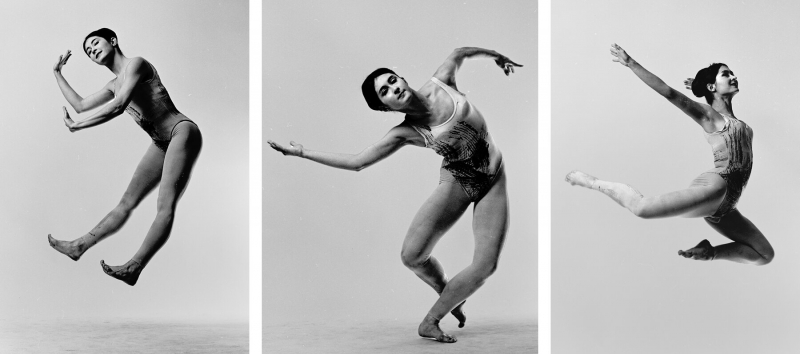
nytimes.com 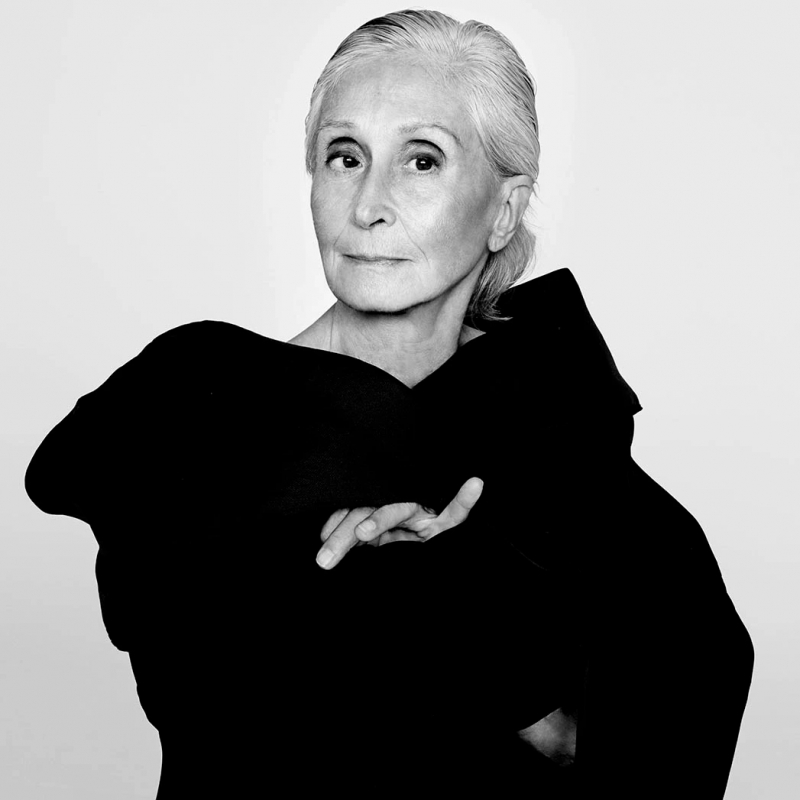
nytimes.com














